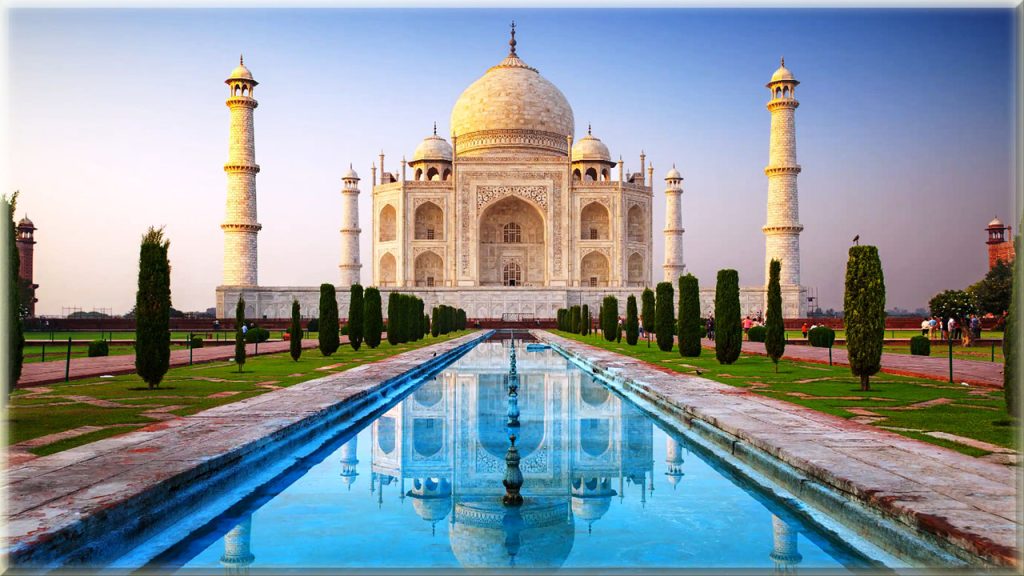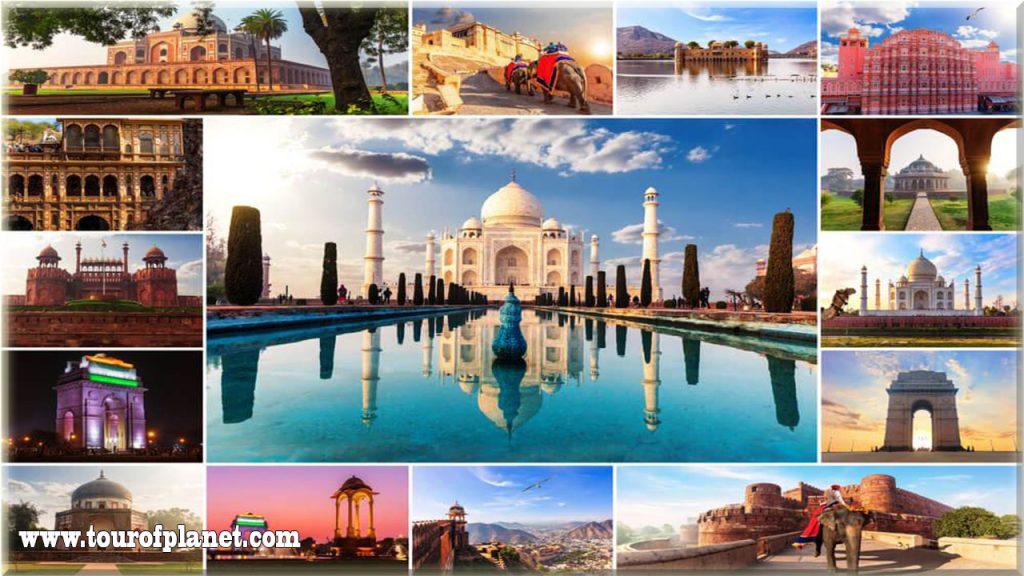India, a vibrant and diverse nation located in South Asia, boasts a rich tapestry of culture, history, and natural wonders. As the seventh-largest country in the world, India has captured the fascination of millions with its ancient heritage and modern accomplishments. In this article, we will explore 50 intriguing facts about India, shedding light on its unique attributes and contributions to the global stage. From its diverse geography to its colorful festivals, India has much to offer and continues to leave an indelible mark on the world.
India’s Geographical Diversity:
India’s landscape is remarkably varied, ranging from the majestic Himalayan mountains in the north to the sun-kissed beaches in the south. The country is also home to lush forests, arid deserts, fertile plains, and winding rivers.
Second Most Populous Country:
With over 1.3 billion people, India is the world’s second-most populous country, after China. Its population represents a diverse array of ethnicities, languages, and religions.
India’s Official Language:
Hindi is the official language of India, and it is spoken by a significant portion of the population. However, English is also widely used for administrative and business purposes, contributing to India’s multilingual environment.
Iconic Landmarks:
India boasts numerous iconic landmarks, such as the Taj Mahal in Agra, a UNESCO World Heritage Site and one of the New Seven Wonders of the World. This stunning marble mausoleum was built by Emperor Shah Jahan in memory of his beloved wife.
Unity in Diversity:
India is celebrated for its diversity, with 29 states and 7 union territories, each offering unique traditions, cuisines, and cultural practices.
Yoga’s Birthplace:
Yoga, a practice that promotes physical and mental well-being, originated in ancient India. Today, it is embraced worldwide for its myriad health benefits.
Ayurveda: The Ancient Science of Healing:
India gave birth to Ayurveda, one of the world’s oldest systems of medicine. Ayurvedic practices focus on holistic healing through a balanced diet, herbal remedies, and lifestyle adjustments.
Indian Railways:
India boasts one of the largest railway networks globally, operated by Indian Railways. Spanning more than 67,000 miles, it connects remote corners of the country, making travel accessible to millions.
The Vibrant Festivals:
India’s calendar is filled with vibrant festivals like Diwali, Holi, Eid, Christmas, and many more. These celebrations showcase the country’s spirit of inclusivity and communal harmony.
Bollywood: The World’s Largest Film Industry:
Bollywood, India’s prolific film industry based in Mumbai, churns out thousands of films each year. Its influence stretches beyond national borders, making it one of the world’s most influential film industries.
The Breathtaking Himalayas:
India is home to a significant portion of the majestic Himalayan mountain range, including the world’s highest peak, Mount Everest, which is shared with Nepal.
The Ancient Indus Valley Civilization:
The Indus Valley Civilization, one of the world’s oldest urban civilizations, thrived around 2500 BCE in present-day India and Pakistan. Mohenjo-Daro and Harappa are among the well-preserved archaeological sites of this ancient civilization.
The Sacred Ganges River:
The Ganges, considered one of India’s holiest rivers, holds immense religious significance for Hindus. Millions of pilgrims visit its banks annually, seeking spiritual purification.
Biodiversity Hotspot:
India is one of the world’s seventeen megadiverse countries, housing a diverse array of flora and fauna. The country’s rich biodiversity is preserved in its numerous national parks and wildlife sanctuaries.
Iconic Wildlife:
India is home to iconic wildlife species like Bengal tigers, Indian elephants, Indian rhinoceros, and Asiatic lions. Efforts are ongoing to protect these endangered species and their habitats.
The Luxuriant Mango:
Mango, India’s national fruit, is a favorite among fruit enthusiasts worldwide. India produces a wide variety of mangoes, each with its unique flavor and texture.
Indian Spices:
India has been a hub of spice trading for centuries. Its spices, like turmeric, cardamom, and cumin, have left a lasting impact on cuisines worldwide.
The Cuisines of India:
Indian cuisine is a delightful journey of flavors, with regional specialties like biryani, dosa, butter chicken, and samosas gaining international recognition.
The Great Indian Desert:
The Thar Desert, situated in the northwestern part of India, is a unique ecosystem known for its expansive sand dunes and rich cultural heritage.
Ancient Mathematical Discoveries:
India’s contributions to mathematics are significant. The concept of zero and the decimal system were first developed in India.
The Golden Temple:
The Golden Temple, located in Amritsar, Punjab, is the holiest shrine for Sikhs. Its striking golden exterior and peaceful surroundings attract millions of devotees annually.
The Peacock, India’s National Bird:
The peacock, with its stunningly colorful plumage, serves as India’s national bird. It symbolizes grace, beauty, and pride.
Diverse Cultural Dance Forms:
India’s rich cultural heritage is reflected in its diverse dance forms, such as Bharatanatyam, Kathak, Odissi, and Manipuri, each originating from different regions.
Major Information Technology Hub:
India is a global leader in information technology, with cities like Bangalore and Hyderabad serving as prominent tech hubs.
The Mystical Ajanta and Ellora Caves:
The Ajanta and Ellora Caves, UNESCO World Heritage Sites, showcase exquisite rock-cut Buddhist, Hindu, and Jain cave temples.
The First Plastic Surgery Techniques:
Sushruta, an ancient Indian physician, pioneered early techniques in plastic surgery, as documented in the ancient text “Sushruta Samhita.”
The Enchanting Backwaters of Kerala:
Kerala’s backwaters, a network of serene lagoons and canals, offer a unique and picturesque landscape that attracts tourists from around the world.
The Iconic Peacock Throne:
The Peacock Throne, a legendary throne studded with precious stones, was once housed in India and became a symbol of opulence and power.
The World’s Highest Cricket Ground:
Chail Cricket Ground, situated in Chail, Himachal Pradesh, holds the distinction of being the world’s highest cricket ground, situated at an altitude of 7,500 feet.
The Spectacular Rann of Kutch:
The Rann of Kutch, a seasonal salt marsh in Gujarat, hosts the vibrant Rann Utsav, showcasing the region’s culture, art, and handicrafts.
The Exquisite Jaipur City Palace:
The City Palace in Jaipur, Rajasthan, is a magnificent blend of Rajasthani and Mughal architectural styles, offering visitors a glimpse into India’s royal past.
The Himalayan Railways:
The Darjeeling Himalayan Railway, affectionately known as the “Toy Train,” is a UNESCO World Heritage Site and offers a scenic journey through the breathtaking landscapes of the Himalayas.
The Varied Classical Music:
India boasts a rich tradition of classical music, with two prominent styles: Hindustani in the north and Carnatic in the south.
The Mesmerizing Stepwells:
Stepwells, ancient water storage systems found in India, showcase intricate architectural designs and engineering brilliance.
India’s Love for Cricket:
Cricket is more than a sport in India; it’s a passion that unites the entire nation. The Indian Premier League (IPL) is one of the world’s most popular cricket leagues.
The Indian Space Research Organization (ISRO):
India’s space agency, ISRO, has achieved significant milestones, including successful Mars and moon missions.
The Colorful Holi Festival:
Holi, the festival of colors, marks the triumph of good over evil and is celebrated with enthusiasm across the country.
The UNESCO-recognized Qutub Minar:
The Qutub Minar in Delhi is a striking medieval monument and the world’s tallest brick minaret, dating back to the 12th century.
The Ancient Science of Astronomy:
India’s ancient astronomers made significant contributions to the field, with discoveries like the heliocentric model predating similar Western ideas.
The Mangalyaan Mars Orbiter Mission:
India’s Mars Orbiter Mission (Mangalyaan) made India the first Asian nation to reach Mars orbit and the fourth space agency in the world to do so.
The Royal Bengal Tiger:
The Royal Bengal Tiger, India’s national animal, represents strength and courage, but sadly, it is an endangered species.
The Majestic Mysore Palace:
The Mysore Palace in Karnataka is an architectural marvel, adorned with intricate carvings and opulent interiors, attracting visitors from far and wide.
The Largest Gathering on Earth:
The Kumbh Mela, a massive Hindu pilgrimage, sees millions of devotees gather to bathe in holy rivers, creating a mesmerizing spectacle of faith and spirituality.
The Mesmerizing Andaman and Nicobar Islands:
The Andaman and Nicobar Islands, known for their pristine beaches and rich marine life, are a popular tourist destination
The Vibrant Sari:
The sari, a traditional Indian garment, is not only an epitome of grace but also a symbol of the nation’s cultural heritage.
The Oldest Civilization on the Indian Subcontinent:
The Vedic civilization, one of India’s earliest, laid the foundation for Indian culture, philosophy, and religion.
The Great Indian Desert Festival:
The Pushkar Camel Fair, held annually in Rajasthan, is one of the world’s largest camel fairs, featuring colorful festivities and camel trading.
The Indian National Emblem:
India’s national emblem features four lions standing back-to-back, symbolizing courage, power, pride, and confidence.
The Everlasting Spirit of India:
India’s journey from ancient civilization to a modern nation is a testament to its indomitable spirit, resilience, and perpetual quest for progress.
Conclusion
India’s captivating allure is evident in its diverse cultural heritage, breathtaking landscapes, and remarkable achievements. As one of the world’s oldest and most culturally rich civilizations, India continues to inspire and enthrall people across the globe. With its deep-rooted traditions and ever-evolving modernity, India remains a land of endless wonders, deserving recognition and appreciation from all corners of the world.
FAQ
What are some unique facts about India’s cultural diversity?
India is a melting pot of cultures, with over 2,000 distinct ethnic groups and more than 1,600 languages spoken. Its rich cultural heritage includes diverse art forms, dance styles, music, and festivals celebrated throughout the country.
How has India contributed to the world of mathematics and science?
India’s ancient mathematicians made significant contributions, including the concept of zero, decimal system, and the value of pi. Additionally, Aryabhata, an Indian mathematician, calculated the value of π (pi) with remarkable accuracy.
Tell us about some extraordinary architectural marvels in India.
India boasts impressive architectural wonders like the Taj Mahal, a UNESCO World Heritage Site and one of the Seven Wonders of the World. Other notable examples include the ancient Ellora and Ajanta Caves, showcasing intricate rock-cut architecture.
What are some interesting facts about India’s wildlife and natural wonders?
India is home to a diverse range of wildlife, including Bengal tigers, Indian elephants, and one-horned rhinoceros. The country also features stunning natural landmarks such as the majestic Himalayas, the Thar Desert, and the picturesque backwaters of Kerala.
How has India influenced the global spice trade throughout history?
India’s spices have been sought after for centuries, and it played a significant role in the ancient spice trade. Spices like pepper, cinnamon, and cardamom were highly prized and attracted traders from distant lands to India’s shores.

